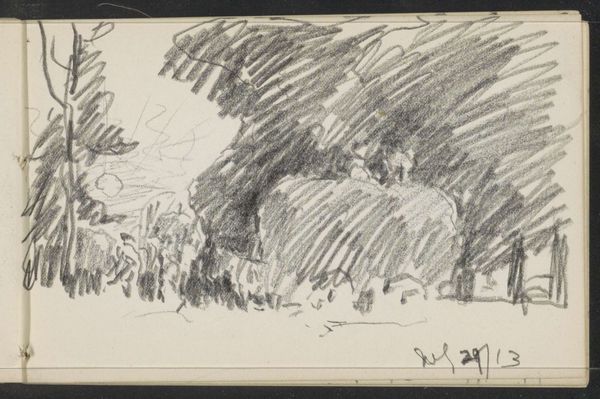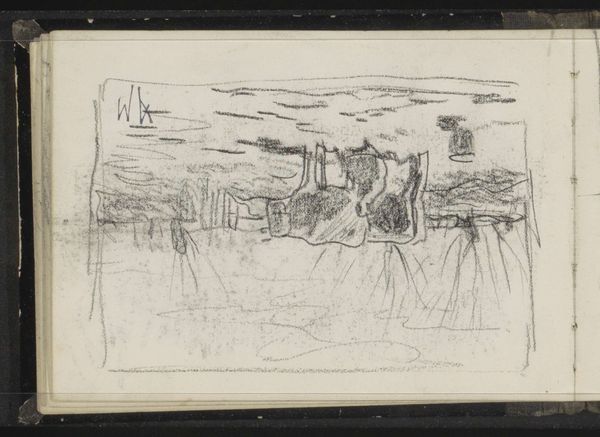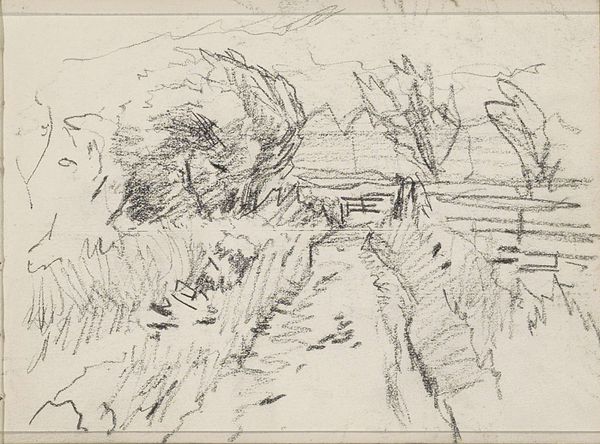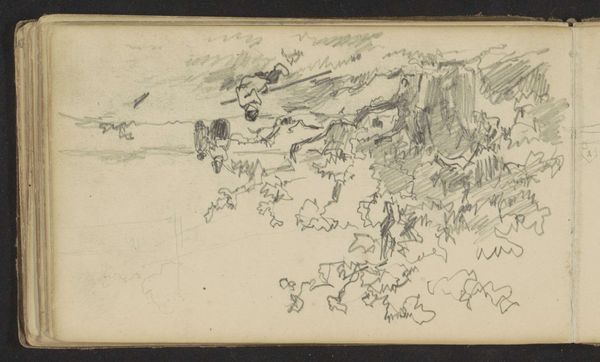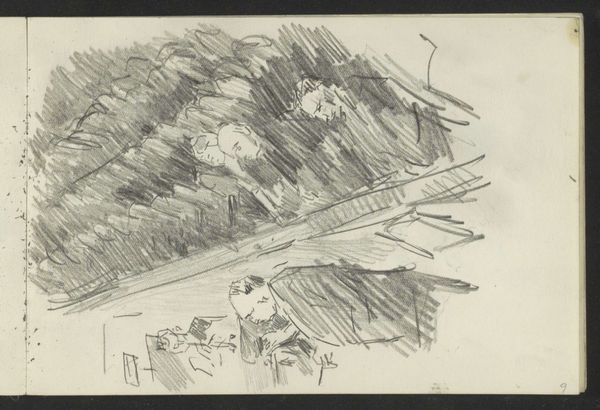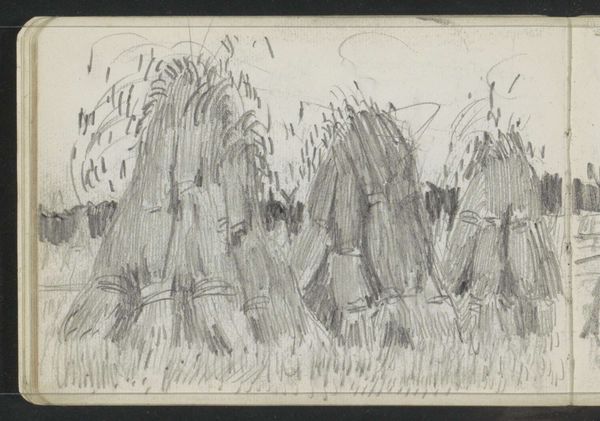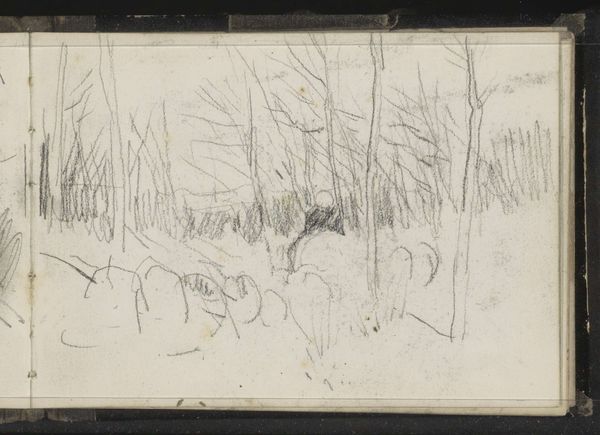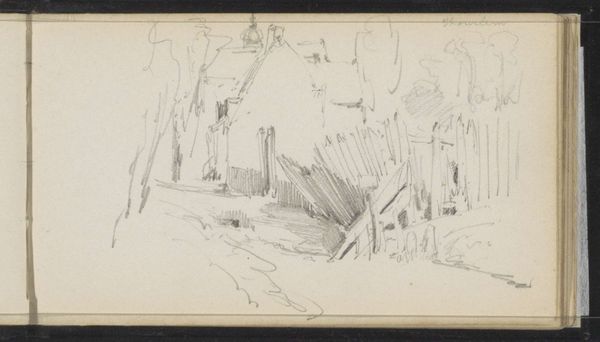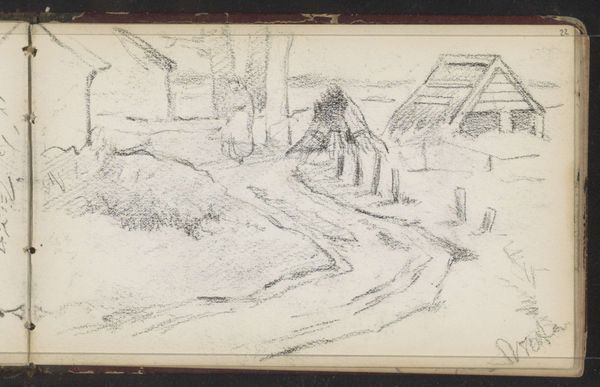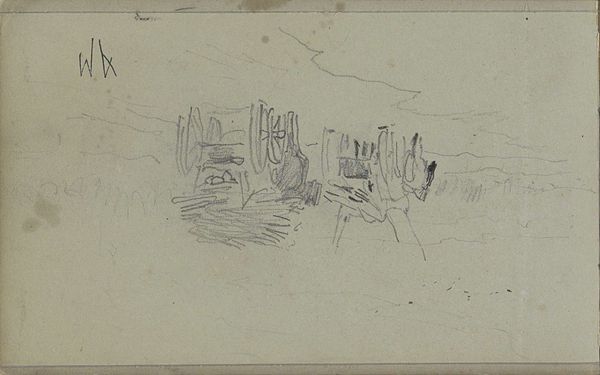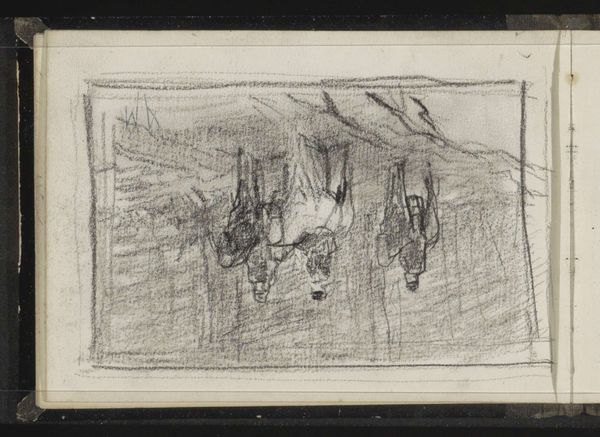
drawing, pencil
#
drawing
#
impressionism
#
landscape
#
pencil
#
realism
Copyright: Rijks Museum: Open Domain
Curator: Welcome. Here we have "Trees and Bushes on Both Sides of a Canal," a pencil drawing by Anton Mauve, created sometime between 1848 and 1888. It's currently held in the collection of the Rijksmuseum. Editor: Immediately, I am struck by the artist’s hand. The lines have such an understated urgency; it conveys a melancholic beauty, wouldn't you agree? Curator: Indeed. The visible pencil strokes reveal the materiality of the piece, reminding us that this is an object composed of graphite and paper. Note how the horizontal hatching defines the volume of the foliage, playing with light and shadow to create form. The contrast suggests a specific, transient moment. Editor: For me, the trees framing the waterway feel almost like guardians. Trees and water often signify interconnectedness—the source of life, mirrored reflections—reminding us of our relationship with nature and the continuous cycle of change and continuity in nature. Curator: Quite. Moreover, the repetitive mark-making is integral. The diagonal, cross-hatching technique suggests depth, rendering this relatively flat, two-dimensional surface into a seemingly navigable landscape. It is both realistic and evocative. Editor: There’s also something archetypal about the image. The motif of mirroring is something universally appealing in different cultures. Water symbolizes the subconscious, a point of access for inner understanding. Mauve offers this gentle invitation to introspection. Curator: Undoubtedly, the artist has harnessed a remarkable understanding of structure, tone, and visual rhetoric. There's so much conveyed with so few apparent resources. It truly is masterful in its own unassuming manner. Editor: Absolutely. What seemed like a casual landscape sketch now speaks to the underlying rhythms of life and perception.
Comments
No comments
Be the first to comment and join the conversation on the ultimate creative platform.
